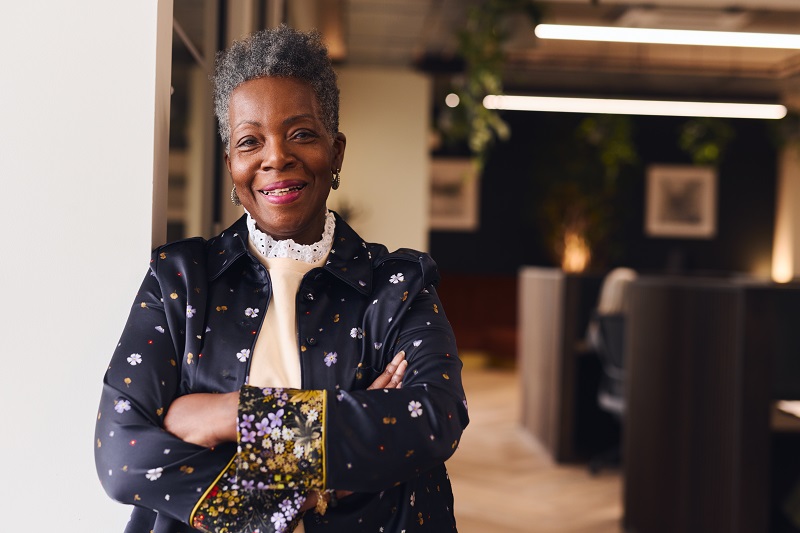Although creativity usually comes down to employees’ skills and expertise, various organisational factors are responsible for either stifling creativity or helping it flourish. Leaders are responsible for building a culture that facilitates and encourages employee creativity and high performance.
The Adobe Creativity Gap study found that only one in four respondents felt they were living up to their creative potential at work, and 75% said they felt pressured to be productive rather than creative at work. But how can leaders address the struggles with creativity in teams?
Recognition of the relationship between psychological safety, creativity, and innovation is fundamental. Psychological safety is the foundation for a proactive wellbeing strategy and encourages sustainable high performance among teams, and enhances creativity.
So, why is psychological safety essential to creative performance, and how can leaders embed it?
Increased creativity
Creativity and innovation are stifled when the brain feels under threat because experimenting with a new idea feels risky. The human drive to fit in with the rest of the band means we are wired to conform to whatever we feel is the ‘safest’ option to impress our peers and managers.
If employees feel under pressure to achieve rigid targets and mould to a particular way of working, they are going to be much more reluctant to share ideas and experiment with new concepts because there could be personal negative consequences from breaking that mould.
A study of Google employees found that psychological safety was the most important dynamic they found in successful teams, underpinning all other dynamics influencing success.
Leaders should strive to create a safe environment for creative risk-taking and idea-sharing. An important way to do this is by sharing their experiences of experimenting with good and bad ideas to encourage employees to do the same. Similarly, listening actively and engaging in discussions that employees are excited about without immediately shutting them down is also key to ensuring nobody is deterred from creativity and innovation.
Enhanced engagement through freedom
Engagement with their work will also be enhanced when they feel they can explore ideas that excite them. This freedom will help align personal energy inputs with appropriately defined priorities and a focus on personal mission and purpose. Leaders must keep in mind that employees need to be fulfilling their personal purpose, as well as the purpose of the company, to be performing optimally.
Leaders can help employees feel trusted and valued by encouraging them to take creative risks, listen to their ideas, and respond constructively when ideas might not be the best fit. Keep in mind that as humans, we fear rejection and humiliation, so being sensitive when listening and responding is important, so you do not damage the psychological safety you are building.
Maximised pressure management
We know that high levels of stress are a threat to employee performance and critical thinking abilities. Protecting employees from damaging stress is crucial to ensuring sustained performance and limiting the risk of burnout.
Psychological safety is key to ensuring employees feel seen, heard and valued to share when they feel under pressure. Leaders must make it clear not only that employees can speak to them but that they actively want to hear about their feelings and support their wellbeing. Pressure is an inescapable element of work, but when employees feel they have to deal with it alone or fear asking for support, it can snowball into something much worse.
Inviting employees to share their feelings and responding with empathy and curiosity is a key foundation to creating a safe space where people feel they can talk with you. A recent survey found employees to be 71% less likely to report experiencing a lot of burnout when they felt their company cared about their wellbeing. When this is embedded, overall performance will improve too.
When employees are able to experiment with new ideas they are personally invested in, this enjoyment of work can be harnessed to enhance their pressure management skills, as excitement can help manage stress around deadlines and workload.
The relationship between boundary setting and sustainable creative performance
In our increasingly hybrid world, unhealthy habits such as overworking and not taking breaks can become common when our personal and professional spheres become blurred. When employees feel pressure to overwork, creativity will be dulled, and wellbeing issues can become prevalent.
Leaders must bear in mind that many employees may not feel confident enough to set firm, self-protecting boundaries without there being a culture of boundary setting stemming from the top. Senior leadership must create a culture of firm boundary setting where employees feel they can safely take needed breaks and holidays and say no to work when they are at capacity. Without it, people will work with much-depleted energy reserves, a key hindrance to performance.
Leaders should openly discourage presenteeism and the celebration of busyness and overworking that often dominates corporate spaces. Employees will likely follow suit and implement their own sustainable working patterns and boundaries when this is cemented in company culture. All breaks and rest periods should be seen as an investment in employees’ next wave of creative performance.
Building supportive communities
Insecurity and fear of embarrassment are likely to make many refrain from experimenting with ideas. By encouraging close communities that work together in supportive collaboration, leaders will maximise the productivity and value of work within teams.
Facilitating workshops and team meetings where people can speak freely and collaborate is key. Leaders can pave the way by being vulnerable with their ideas and experiences to create a safe space for knowledge sharing. Baseless critical responses to employee ideas must be actively discouraged. This is not to say constructive criticism should not be shared but it should be grounded in evidence and delivered sensitively.
Psychological safety must be recognised by employers as the foundation for resilient, high-performing, and creative teams. Without psychological safety, creativity and innovation will be restricted, and energy and pressure management are likely to be depleted.
By Lesley Cooper, CEO of WorkingWell and a management consultant with a background in health and wellbeing consulting in the private healthcare sector.








